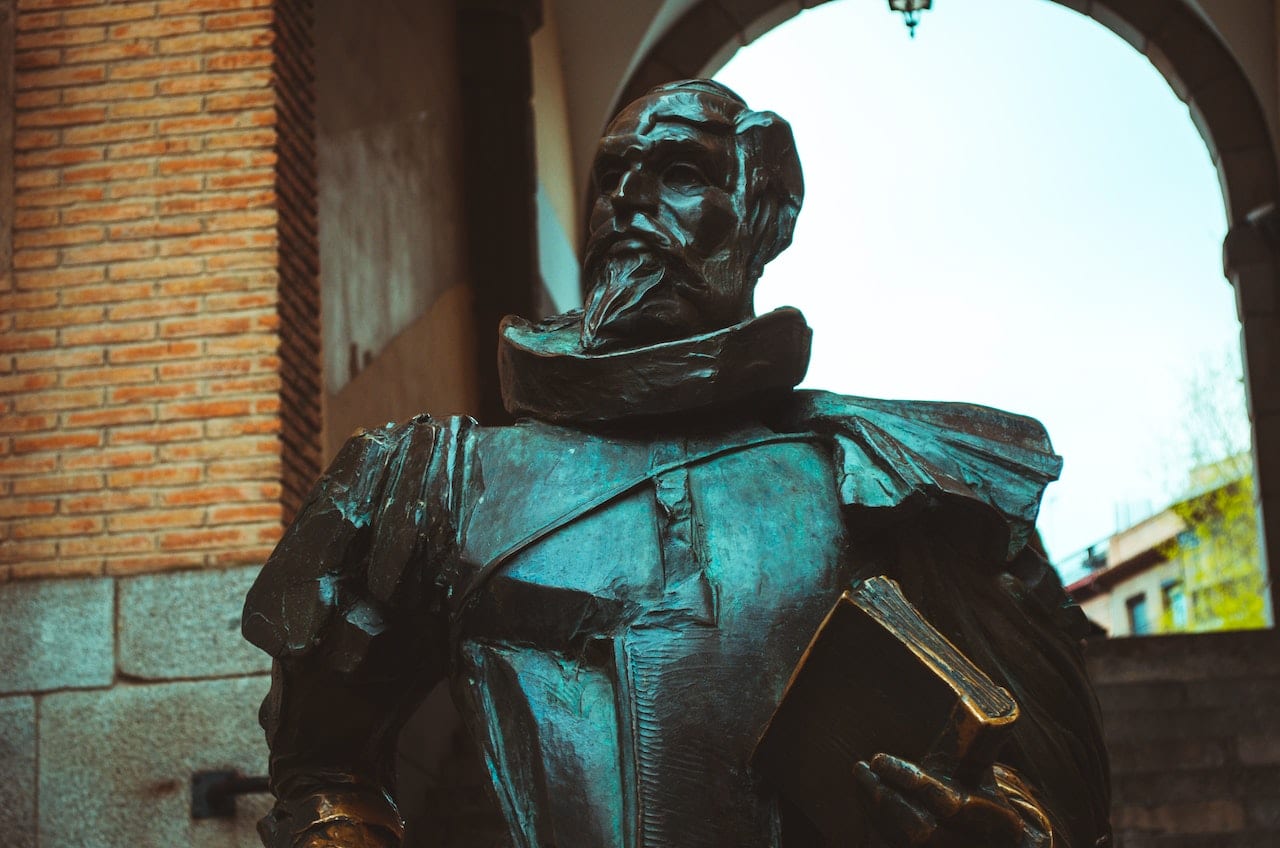
The Fascinating History of The Spanish Language
DATE:
According to the Cervantes Institute, Spanish is currently spoken by almost 500 million people around the world and the number continues to grow every day. It is spoken in almost the entire Iberian Peninsula and in the southwest of the USA.
It’s the official language of Mexico, most of Central and South America (with the exception of Brazil and the Guyanas), the Equatorial Guinea in Africa, and it’s the language of a minority group of speakers in the Philippines.
The United States is considered now the second-largest Spanish-speaking country in the world and is expected to become the largest by 2050.
It’s very impressive to think how many people speak Spanish today, but have you ever wondered how this language gained that much popularity? How was it even created? Who created it?
The History of the Spanish Language is very rich and complex at the same time. Spanish did not appear from one day to another fully formed. It’s a language that evolved around 1500 years to finally achieve its modern form and the global status it holds.
Learning how this fascinating language was born is a very good way to understand what it takes for a language to be created, and perhaps it will give you a sense of value if you’re interested in learning it.
In this article, we’ll explore the history of the Spanish Language and how it has evolved over the years. You’ll also learn about some of the unique quirks that make Spanish one of the most interesting languages in the world!
So, if you’re ready to learn more about this amazing language, let’s get right into it!
The Latin Language and the Spanish Language
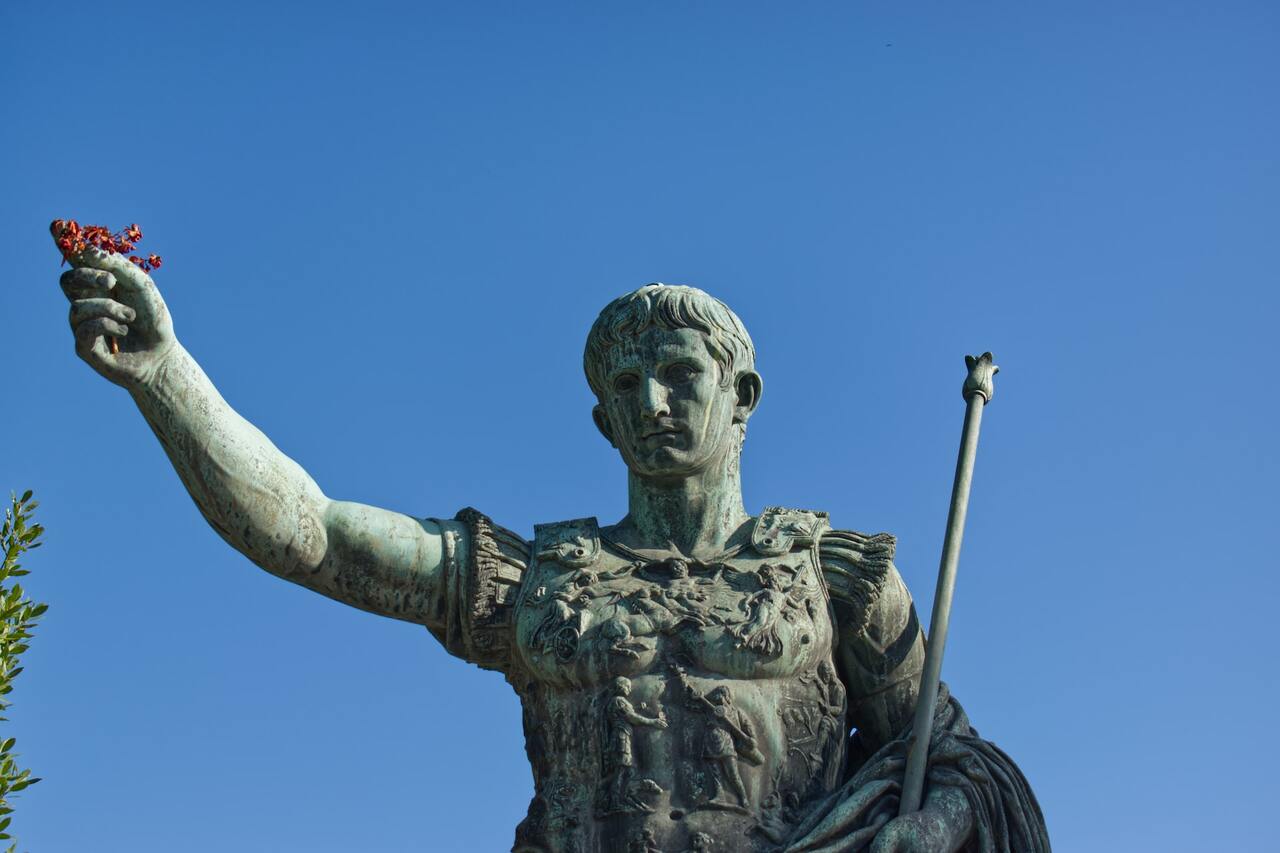
The Spanish language belongs to the family of Romance languages, meaning that it’s derived from the language spoken in Rome: Latin.
Latin wasn’t a homogenous language. Throughout the Roman Empire, a “cultured” or “literary” Latin was spoken, and at the same time, there was also a more “improper” Latin, that reflected the way lower social classes spoke: soldiers, merchants, and other common citizens, called Vulgar Latin.
This was not, as some have claimed, a different language from literary or cultured Latin, it was just simply the Latin spoken by the illiterate classes, easier and more spontaneous, which had neither the select lexicon, nor the wealth nor the variety of grammatical forms, nor the elegance of the Latin used by the educated classes and in literary works.
Vulgar Latin evolved through time, as naturally expected, and its changes were greater as it was influenced by indigenous languages of the countries that Rome conquered and imposed its domain on, being Spain one of them.
In the next table, we will show you a script in Latin and its Spanish translation to show you how Latin and Spanish are very similar:
|
LA GUERRA DE LAS GALIAS (Julio César) |
|---|
|
Gallia est omnis divisa in partes tres, quarum unam incolunt Belgae, aliam Aquitani, tertiam qui ipsorum lingua Celtae, nostra Galli appellantur. Hi omnes lingua, institutis, legibus inter se differunt. |
|
Toda la Galia está dividida en tres partes, de las cuales habitan una los belgas, otra los aquitanos y la tercera los que en su lengua se llaman celtas y en la nuestra galos. Todos estos se diferencian entre sí por el idioma, las costumbres y las leyes. |
Most modern Spanish words (around 70% of them) come from Latin: the days of the week (except Sábado), the months of the year, many names of cities and towns (Pamplona, León, Zaragoza, Lugo, Mérida, Astorga), ordinal numbers, etc. The Romans, in addition to their language, also imposed their law and religion.
Also, many Greek words entered the Spanish language through Latin. For example: cirugía, estómago, melancolía, comedia, escuela, pedagogo, ángel, evangelio, cementerio, monasterio, etc.
Those would be considered legacy words, but there are also “borrowed words”. These are words taken from another language in case needed to name new things. For example, during the 15th century, Greek words were introduced to the Spanish Language. We “borrowed” these words from them, but never gave them back!
The diverse developments of Latin through the years resulted in the formation of different languages known as Romance languages, which include Spanish, Catalan, Galician, Italian, French, Portuguese, Romanian, and Romansh.
In the table below you will see the evolution of the word “town” in different Romance languages:
|
Latin |
Spanish |
Catalan |
Galician |
French |
Italian |
|---|---|---|---|---|---|
|
Populu |
Pueblo |
Poble |
Pobo |
Peuple |
Popolo |
History of Spanish Language: Timeline
The pre-Roman languages
By the time the Romans arrived in 218 BC to the North of the Iberian Peninsula, (modern-day Spain and Portugal) languages like Euskera or Basque were spoken since other civilizations and tribes were already established there, such as
- Tartessians
- Iberians
- Etruscans (of Italian origin)
- Phoenicians
- Carthaginians (who named Spania to the territory, meaning “land of rabbits”)
- Greeks (who named Iberia the peninsula)
- The Ligurians
- Celts
- The Celtiberians
All these languages would leave their mark on modern Spanish and the rest of the constitutional languages.
In the year 218 BC started the incorporation of Spain into the Greco-Latin world. The Carthaginians fought the Romans, but the Romans won and conquered the peninsula, giving the territory a new name; “Hispania”.
Most of those aforementioned languages faded out in time with the exception of Euskera. In any case, there are still words of pre-Roman origin we use today, for example, Barro, Cabaña, Cerveza, Salmón, Carpintero, Conejo, Charca, Perro, Lanza, Balsa…
While the Romans were conquering Hispania (they completed their campaign in 19 BC), Latin spread throughout the territory creating a linguistic unit that had never existed before.
Its expansion went hand in hand with the rise of Christianity as the major religion in the empire, which took it as a vehicle for evangelization. They brought their most technological advancement, culture, their customs, and Latin as their language. Although not the classical Latin of educated people, but instead the Vulgar Latin used by soldiers, farmers, and merchants.
The pre-Roman languages competed with Latin for some time, until little by little Latin dominated them. From this Vulgar Latin, the Romance languages will emerge throughout Europe in the 8th century, such as:
- Aragonese
- Leonese
- Spanish
- Galician
- Portuguese
- Catalan
- Provencal
- French
- Italian
- Sardinian
- Romansh
- Romanian
- Dalmatian
During the 5th century AD (year 409), the so-called barbarian, Germanic peoples, invaded the Iberian Peninsula. They were tribes of Sueves, Vandals, and Alans that spoke the Gothic language. These civilizations were very strong and the Romans started to just give the territory to them.
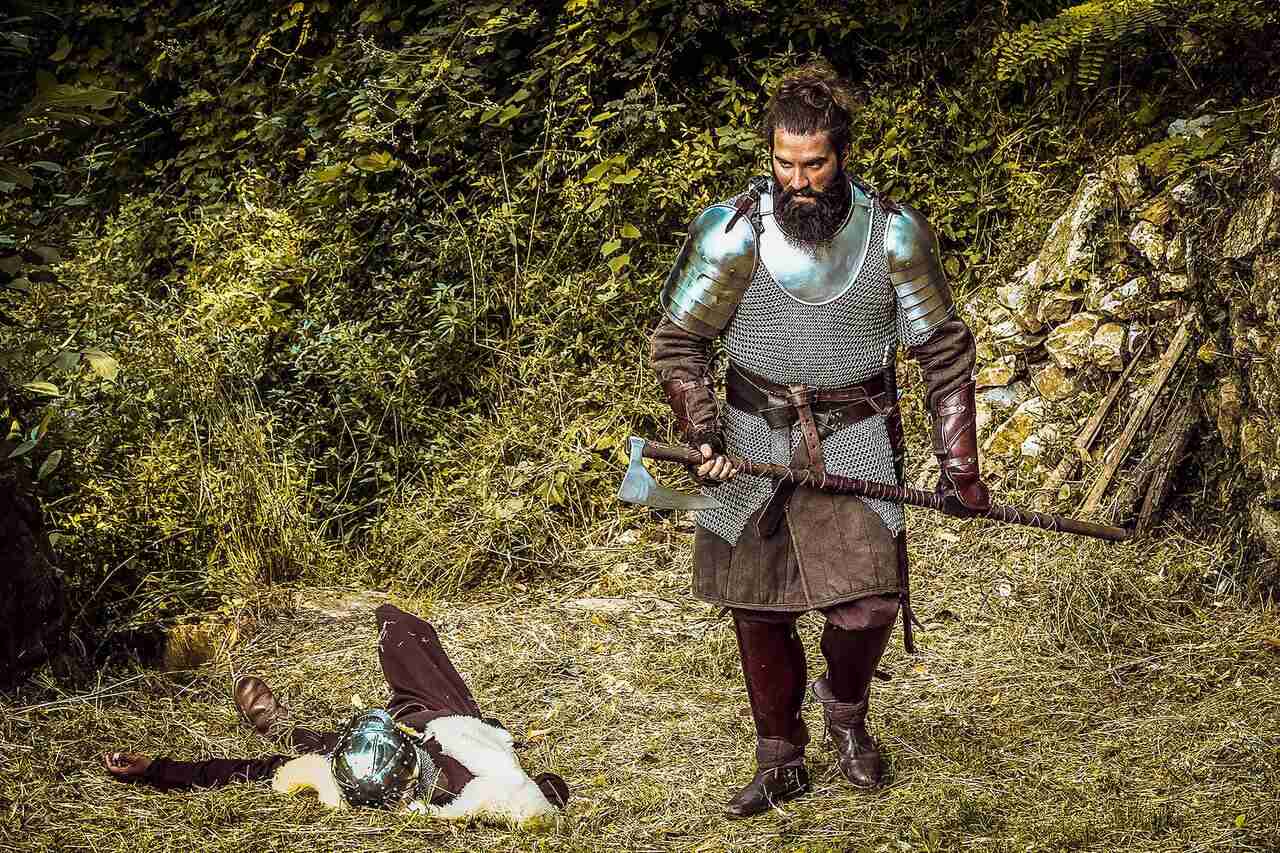
Among the German civilizations, the most relevant were the Visigoths, considered the most civilized of those who arrived to the peninsula. They did not come in large numbers and settled mainly on the Castilian plateau.
Since they were not large numbers of people, they started to speak common Latin instead of their native Gothic language, since they needed to communicate with locals and adapted to the culture and language used in the peninsula.
Still, the Visigoths’ language also influenced Latin, they left many words that are called Germanism, for example: Guerra, robar, guardar, Dardo, Albergue, Bandido, Embajada, Orgullo, Escarnecer, Ropa, Ganso, Aspa, Guardia, Espía, Tapa, Brotar, etc., so as the suffix –engo (Abolengo, Realengo).
The Visigoths dominated all of Hispania and created their kingdom in Toledo in the year 585 AD.
The transcendental fact of the invasions of the Visigoths is that, as a result, a serious depression of the culture took place and communications with the rest of Romania became extremely difficult. Latin spoken in the peninsula was left to its own tendencies, which means that it evolved individually from the rest of the empire, making it more susceptible to changes.
Spanish and its Arabic influence
In the year 711 AD, the Arab invasion took place. Diverse scattered Berber tribes from North Africa (also known as Moors, or “Moros” in Spanish), under the Umayyad Caliphate, seized many territories in less than half a century;
The Arabs conquered Hispania in 7 years. Almost without resistance, the Arabs occupy practically the entire Peninsula and changed its name to Al-Ándalus.
FUN FACT
There’s a very popular Spanish Expression that goes “No hay Moros en la costa”, it is used to indicate that there is no one around, and it serves to alert us or not to possible danger.
This expression originated in these times, The entire Spanish Mediterranean coast, which faces the coasts of North Africa, was periodically looted by the Moors.
To be prepared, all the coastal towns had a watchtower every certain distance permanently guarding the sea. When the lookout spotted a Muslim pirate ship, he shouted to warn the entire town. All the townspeople, then, took refuge in whatever castle or fortress there was and prepared to face them.
The shout of the lookout was “¡Hay Moros en la costa!” When these Moorish raids ceased, the phrase remained to nowadays to indicate that there is some danger lurking nearby, try to use it sometime!
Their culture was vastly superior and more sophisticated than the Visigoths, and their Mozarabic language (an evolved Latin with many Arabic terms) was greatly influenced by it.
Because of this and the amount of time dominating the peninsula (8 centuries!), they contributed new vocabulary to Latin (in general, those that start with al-, because the Arabic definite article “the” is al)
|
Agriculture |
Alfalfa, Alcachofa, Acequia, Albaricoque, Algodón, Azúcar, Zanahoria, Aceituna, Naranja, etc. |
|---|---|
|
Gardening |
Alhelí, Azucena, Azahar, etc. |
|
War |
Alcázar, Alférez, Tambor, Jinete, Atalaya, Hazaña, etc. |
|
Building |
Albañil, Alcoba, Tabique, Alcantarilla, Azotea, Azulejo, etc. |
|
Clothes, and Utensils |
Alfombra, Taza, Almohada, Tarima, Albornoz, etc. |
|
Sciences |
Álgebra, Alcohol, Cifra, Jarabe, Azufre, Alambique, etc. |
The arrival of the Germanic peoples to the region caused the loss of a unity of Latin and the appearance of variants of it in different geographical areas. Romanesque or Spanish romances tongues started developing far from the Arab domain’s strongholds, such as Galician, Leonese, Asturian, Castilian, Navarrese-Aragonese, and Catalan.
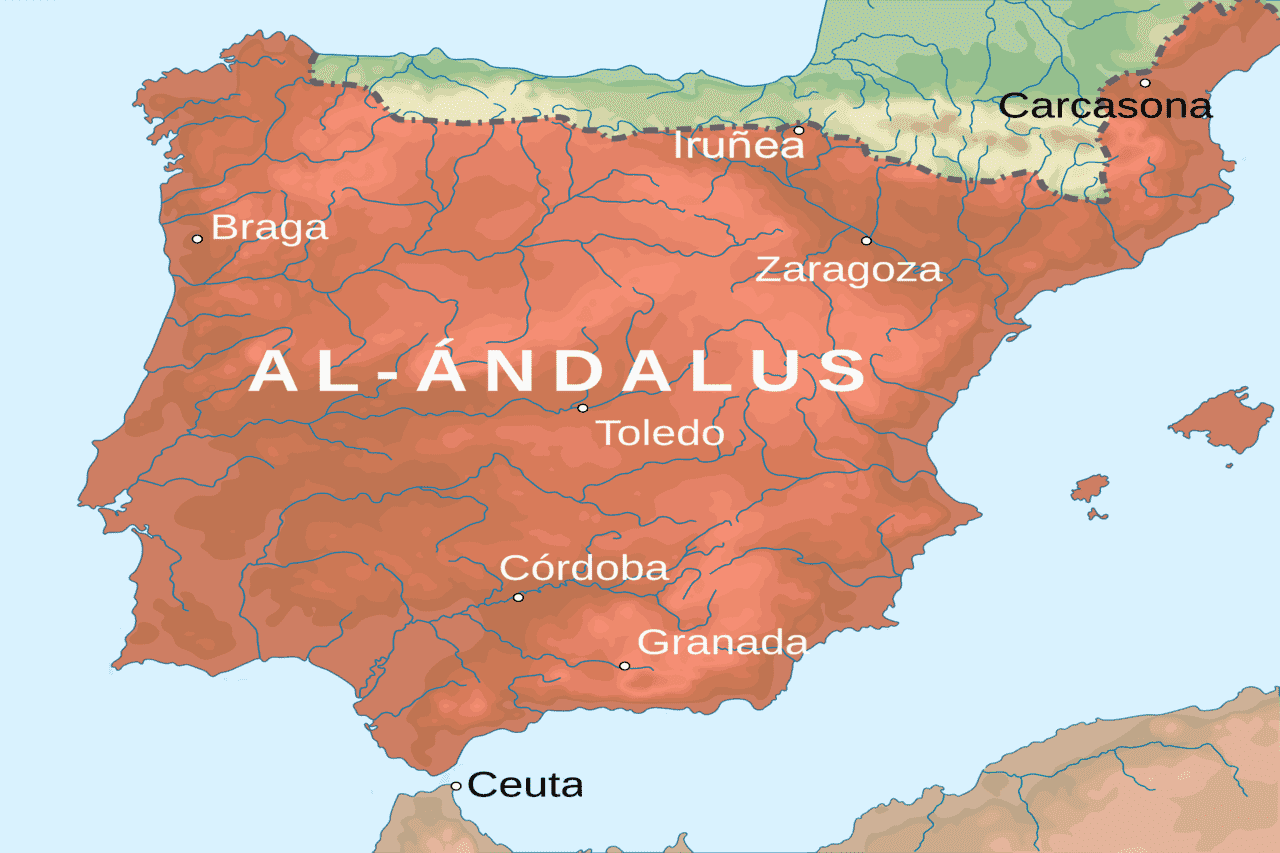
As an interesting Spanish fact, in the Arab zones, the Spanish language was also developing in its own way. The Christians, as well as Arab Muslims and Jews, started to write their literature and specifically some particular verses called Jarchas in Mozarabic.
Jarchas were small texts of love, of two to four verses, placed at the end of poems by Arab and Hebrew writers called moaxajas. The first jarchas are from the 11th Century, although they began to compose them in the 10th Century.
Mozarabic Jarcha vs Spanish
|
Mozarabic |
Spanish |
|---|---|
|
¡Tant’amare, tant’amare, habib, tant’amare! Enfermiron uellos nidios ya duelen tan male. |
¡Tanto amar, tanto amar, amado, tanto amar! Enfermaron (mis) ojos refulgentes duelen con mucho mal. |
Medieval Spanish: The Origin of Castilian Spanish
The origin of Castilian Spanish can be traced back to the region of Cantabria, in some counties dependent on the kingdom of León, in contact with Navarrese-Aragonese and the language of the Basques.
These were the times of kingdoms, knights, and castles. The Iberian Peninsula was divided into small Christian Kingdoms in the north that started a campaign to retake control of the territory from the Arabs in the south (also known as “La Reconquista”) led by the kingdoms of Castile and León with a more unified and growing political and military power.
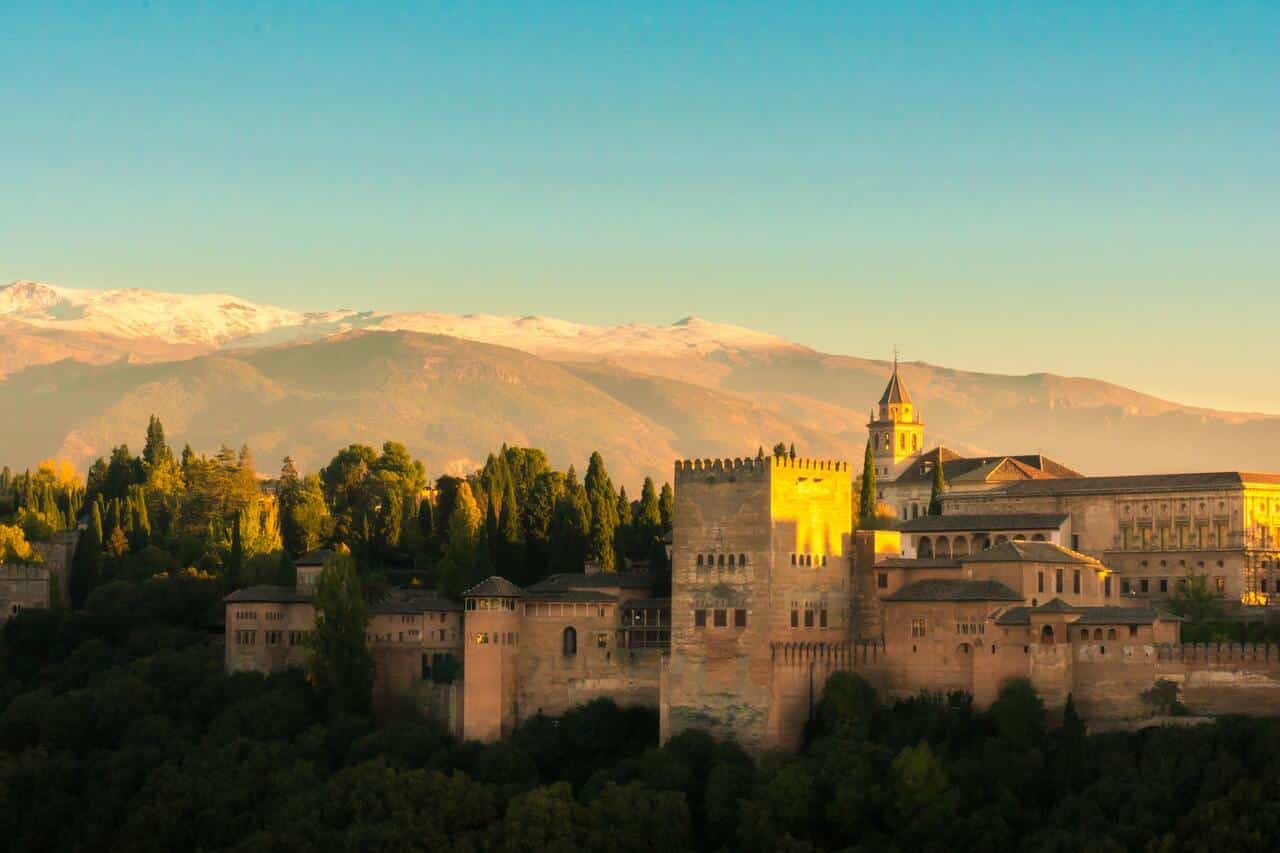
Though to its established political influence among the Iberian Christian Kingdoms, Castilian Spanish and other dialects were significantly developed during the Reconquista. Basque, on the other hand, remained isolated and unchanged over the centuries mostly due to its reclusive geographical location.
During medieval times the region had a diverse number of languages, to the north, the Galician-Portuguese, Leonese, Castilian (Cantabria), Navarrese-Aragonese, and Catalan. And to the south, the Mozarabic dialects.
In the 12th century, the whole region (with Muslims, Jews, and Christian populations) was finally known as España (Spain). The Christian Kingdoms organized themselves under the rule of King Alfonso X “The Wise” who wanted to unify the territory under one identity based on their religion and a common language.
King Alfonso X and the Spanish Language
Alfonso X “el Sabio” (Alphonse 10th, “the wise”) King of Castile and King of León (1252-1284) was the first king who wanted to unify Spain under one faith, one culture, and one single language.
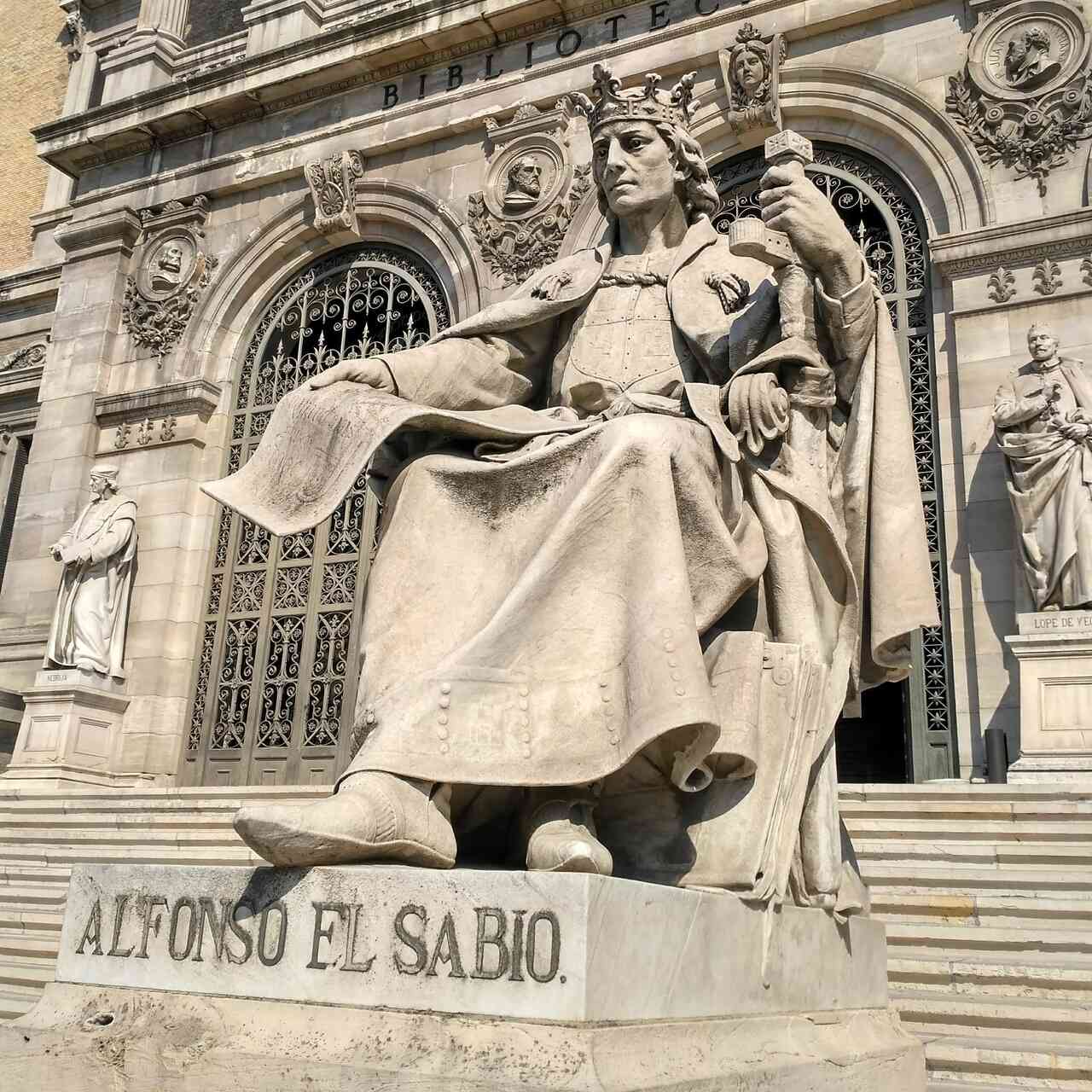
By the end of the 12th century, Spain still had Mozarabic in the south, and in other regions, people were speaking different dialects and languages (Galician, Catalan, Aragonese, Basque, Leonese, and Castilian).
However, Alfonso X and his scholars had a greater preference for the Castilian dialect heard in Toledo, so he decided to standardize it, eventually becoming a distinct language.
King Alfonso knew that the Spanish population of Spain didn’t know how to read and write, and most Christian works of literature were written in Latin.
At that time, Latin was considered a prestigious language from foreign lands, so in order to normalize Spanish, he founded schools of translators in Toledo, from which a standardized form of modern Castilian emerged, known as “Alfonsine Castilian”, which the king himself used on his works.
Among the merits of Alfonso X is the writing of scientific and historiographical works (El Lapidario, Las Siete Partidas, General Estoria, and the First Chronicle) in Spanish instead of Latin (as it was the custom back then).
Do you like poems like the Mozarabic Jarcha? We have a full article about the most romantic Spanish poems and sayings to make your and your loved ones’ heart melt. Click that link to check them out!
He raised the prestige and promoted the use of written Castilian Spanish within his court and throughout the territory where Castilian was spoken in various parts of Spain.
In addition, he undertook numerous projects, such as the translation of legal texts into Spanish and the orthographic normalization of the same, under the work of scholars and ecclesiastical scribes.
The kingdoms of Leon and Castilla regained the territory of Spain finally in 1492 under the rule of monarchs Isabella and Ferdinand, who were also extremely influential in the course of the history of Spanish.
Isabella was the Queen of Castile and Ferdinand was the King of Aragon. Both kingdoms didn’t become one right away, but it is generally accepted by most scholars that the unification of Spain can essentially be traced back to the marriage of Ferdinand and Isabella.
Under their rule, the Castilian variety of Spanish was made the official language of all the “re-conquered” territories.
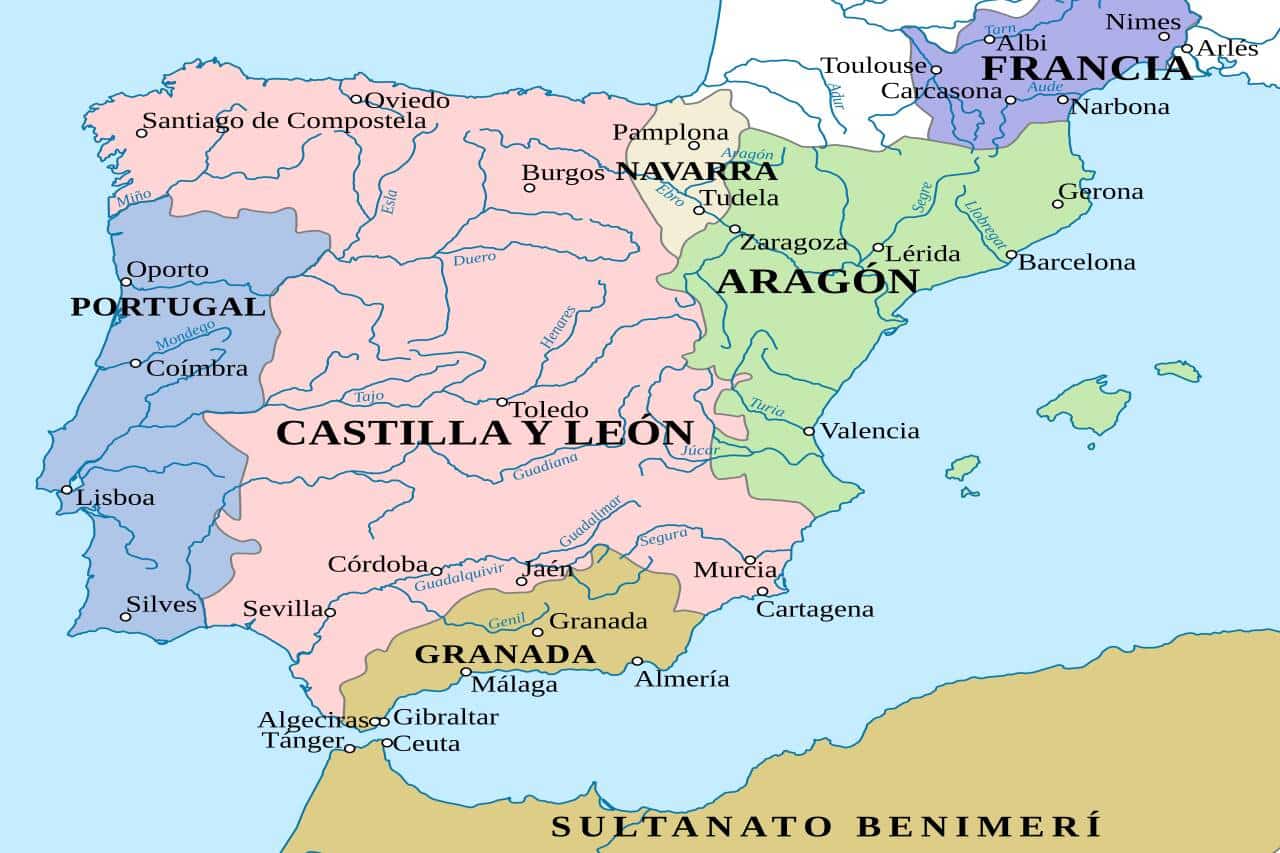
Modern Spanish Language Expansion and Grammar Standardization
Medieval Castilian, with its pre-Roman influences, spread to the south of the peninsula as the Reconquest progressed. At the end of the 15th century, coinciding with the political union of the kingdoms of Castile and Aragon, the taking of Granada, and the discovery of America, Antonio de Nebrija published in Salamanca his Castilian Spanish Grammar book (Gramática de la Lengua Castellana) in 1492.
This grammatical study not related to Latin was the first grammar treatise of the Castilian language (and of the modern language in general).
In 1492, the same year that the last Islamic stronghold in Granada fell, Christopher Columbus began his famous westward voyage from the coast of Spain to seek a new route to Asia. When he landed in the Americas instead, his unintended discovery would lead to the spread of the Spanish language throughout the New World.
In the following century, as Spanish conquistadors arrived on American coasts to subdue the native populations and bring wealth back to their home kingdom, they brought their language with them. Missionaries also traveled to the newly discovered land, bringing with them Latin, the language of the Catholic Church.
It was generally believed that Latin should be used for conversion purposes. Still, many missionaries found it easier to spread understanding and faith in one or more of the native languages.
Thus, Latin, Spanish, and native languages were all used simultaneously during the Spanish conquest of most of Central and South America. This mix of languages gradually brought about new forms of Spanish that were unique to the speakers in the Americas. (further developing even into the Spanish slang we’ve come to know today)
By the time the conquered populations had liberated themselves from Spanish rule in the decades of the 19th century, these dialectical versions of Spanish had become the official languages of the people.
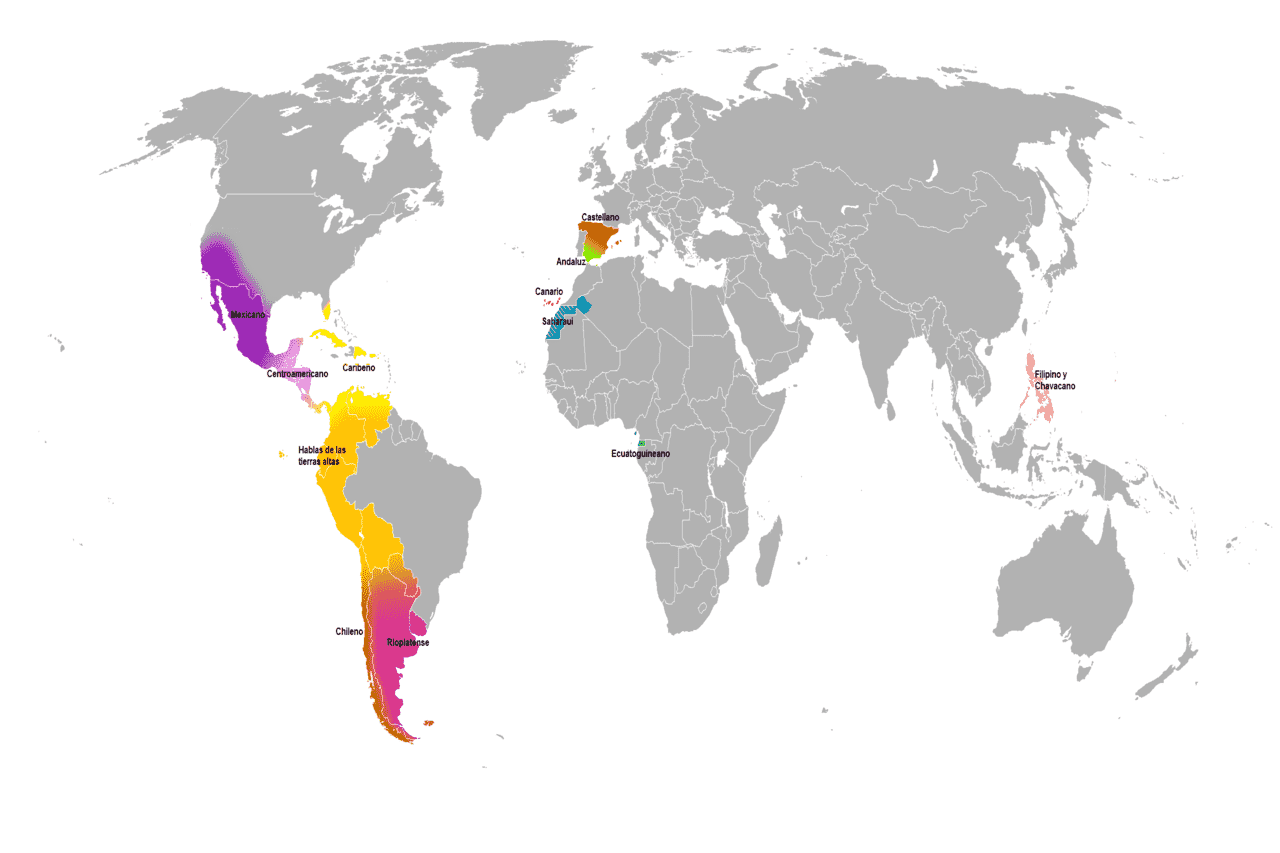
The First Spanish Texts
They are from the 10th century and are found in documents called:
- Glosas Silenses (Monastery of Silos, Burgos) and.
- Glosas Emilianenses (Monastery of San Millán de la Cogolla, La Rioja).
“Glosas” are annotations, made by a monk on certain Latin words to clarify their meaning.
The oldest textbook in Spanish that is still preserved is the Cantar de Mio Cid, recast around 1140, transcribed at the end of the 12th century or the beginning of the 13th, and preserved in a copy of the 14th.
The Royal Spanish Academy
The Royal Spanish Academy, or Real Academia Española, was founded in 1713, mainly with the purpose of standardizing the language. For example, they made it simple for you to learn Spanish by developing rules for the use of accent marks to denote syllabic stress that does not follow the rules of pronunciation.
Between 1726–1739 it produced its first dictionary (in six volumes). It’s still the authoritative source of Castilian Spanish today, reporting an estimated 93,000 words in its latest edition (2014).
Because the language differs so much internationally, other Spanish-speaking countries have their own academies to keep tabs on their regional features.
Spanish has become a more diverse, versatile, and colorful language over the centuries. Evolved distinctively in each part of the world where it’s spoken. Learn more about the different variations and accents spoken across the globe in our Spanish-speaking countries map guide.
And you know the rest…
So, with this, we concluded the origin of this fascinating language. It took almost 1500 years, king after king, invasion after invasion, and a mix of different cultures for this language to be created.
Who would have thought that Spanish is a mix of Latin, Basque, Arabic, and Goth? Or who would have wondered that Latin was a language that many civilizations had to rely on to communicate with each other?
We hope you liked this overview of Spanish language history, and we hope that you now value the Spanish language even more! The history of a language is the history of a civilization.
If you love Spanish culture, want to know more about Spanish history, and travel to new places, in SpanishVIP we’ll be happy to be part of your language-learning journey. Sign up for a free Spanish lesson or a 7-day free trial of our group classes today and never stop learning!








